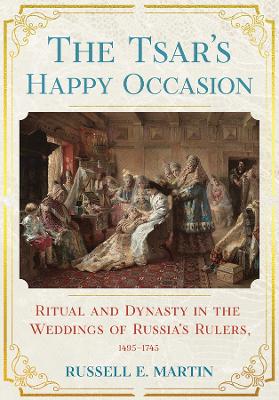NIU Series in Slavic, East European, and Eurasian Studies
2 total works
From 1505 to 1689, Russia's tsars chose their wives through an elaborate ritual: the bride-show. The realm's most beautiful young maidens—provided they hailed from the aristocracy—gathered in Moscow, where the tsar's trusted boyars reviewed their medical histories, evaluated their spiritual qualities, noted their physical appearances, and confirmed their virtue. Those who passed muster were presented to the tsar, who inspected the candidates one by one—usually without speaking to any of them—and chose one to be immediately escorted to the Kremlin to prepare for her wedding and new life as the tsar's consort.
Alongside accounts of sordid boyar plots against brides, the multiple marriages of Ivan the Terrible, and the fascinating spectacle of the bride-show ritual, A Bride for the Tsar offers an analysis of the show's role in the complex politics of royal marriage in early modern Russia. Russell E. Martin argues that the nature of the rituals surrounding the selection of a bride for the tsar tells us much about the extent of his power, revealing it to be limited and collaborative, not autocratic. Extracting the bride-show from relative obscurity, Martin persuasively establishes it as an essential element of the tsarist political system.
The Tsar's Happy Occasion shows how the vast, ornate affairs that were royal weddings in early modern Russia were choreographed to broadcast powerful images of monarchy and dynasty. Processions and speeches emphasized dynastic continuity and legitimacy. Fertility rites blended Christian and pre-Christian symbols to assure the birth of heirs. Gift exchanges created and affirmed social solidarity among the elite. The bride performed rituals that integrated herself and her family into the inner circle of the court.
Using an array of archival sources, Russell E. Martin demonstrates how royal weddings reflected and shaped court politics during a time of dramatic cultural and dynastic change. As Martin shows, the rites of passage in these ceremonies were dazzling displays of monarchical power unlike any other ritual at the Muscovite court. And as dynasties came and went and the political culture evolved, so too did wedding rituals. Martin relates how Peter the Great first mocked, then remade wedding rituals to symbolize and empower his efforts to westernize Russia. After Peter, the two branches of the Romanov dynasty used weddings to solidify their claims to the throne.
The Tsar's Happy Occasion offers a sweeping, yet penetrating cultural history of the power of rituals and the rituals of power in early modern Russia.

